Opinion & Analysis
Jonas Blixt Case Study: From Back Pain to PGA Tour Win
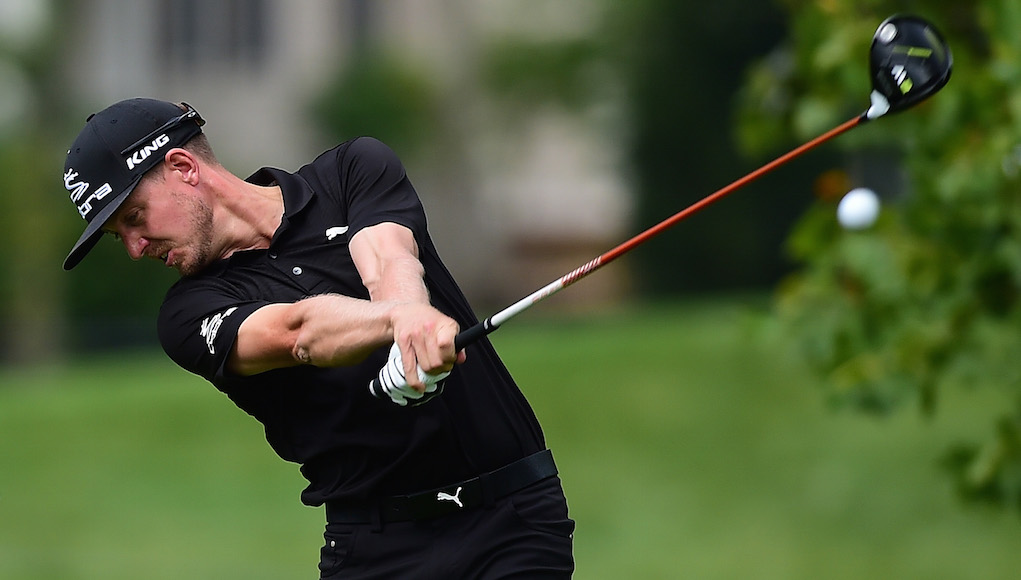
This is a case study on professional golfer Jonas Blixt and his eight-month journey from severe and persistent back pain to a PGA Tour win. It was written to offer insight into the work that a dedicated professional put into his body and his game after a setback due to a significant injury. The case study also serves to highlight the importance of training for posture, spinal strength, and shoulder girdle stability: three areas of training that are often misunderstood and under-appreciated.
The majority of Jonas’ rehab and progression forward was performed using GravityFit exercise techniques and products. GravityFit is an Australian-based company that specializes in a science-based approach to training the body for spinal strength, injury prevention, posture, and golf movement patterns.
Background: Jonas, 32, and is in his sixth season on the PGA Tour. He’s won three times in his career (2012 Frys.com Open, 2013 Greenbrier Classic, 2017 Zurich Classic), and his best finish in a major came in 2012 when he finished T2 at the Masters.
Strengths: Putting, Around the Green. Career-average rank of 33rd in Strokes Gained Putting. Career-average rank of 36th in Strokes Gained Around the Green.
Weaknesses: Off the Tee, Iron Play. Career-average rank of 143rd Strokes Gained Off the Tee. Career-average rank of 158th in Strokes Gained Approach the Green.
Physical Training History: College program at Florida State University. Exposure to various different methods of training stability, mobility, strength, and power since turning professional.
First Contact
Jonas came to see me with after having received two cortisone shots for back pain resulting from herniated discs leading to nerve compression in his lower back. He also received another shot for pain referring into his left glute/hip, suspected at the time to be caused by facet joint inflammation. His desire was initially to return to a pain-free state, and then to improve his long game by hitting more fairways and greens, thereby gaining strokes on the field in the Strokes Gained Off the Tee and Strokes Gained Approach the Green categories. If that outcome could be accompanied by an increase in distance, then that would be a bonus.
After conducting the initial screening and assessment, I highlighted the following areas as priorities for improvement:
- Lumbar and cervical spine posture (lower back and neck).
- Core awareness, stability, and control.
- Arm and body connection movement pattern in rotation.
- Quality of rotation movement pattern from thoracic spine (mid and upper back).
- Mobility in right shoulder (external rotation), thoracic spine (rotation and extension), ankle (dorsi flexion), and quad tightness.
I believed that improving these areas would not only help Jonas move better in his golf swing, but more importantly at that stage, help take strain away from his lower back.
Of particular interest was how Jonas performed in a series of tests for awareness control and stability of the lumbar core (think core muscles and lower back). This seven-stage series of tests is called the Core Body Benchmark. It was developed by GravityFit to provide a more objective measure of core control that could be easily administered in any setting.
Jonas failed the last four tests in the series:
- Hinge Forward
- Hinge Forward with Rotation
- Single Leg Hinge Forward
- Single Leg Rotation
Despite a history of core training, Jonas was unable to use his core muscles effectively in the movements that he repeated up to a thousand times per week: hinging forward, balancing, and rotating (the key components of the golf swing). Click through for more info on the Core Body Benchmark testing protocol.
Initial Program: These assessment findings, combined with the recent back injury, immediately lead me to write Jonas’ first program using predominantly GravityFit tools and techniques, which are specifically designed for strengthening the spine and improving posture. Luckily, we had a few weeks before the first tournament of the 2017 season, so it was time to go work. Below is a snapshot of the initial program, including a few photos of Jonas and myself demonstrating the exercises.
Program 1
A very basic daily program that focused on establishing good posture, as well as training basic spinal stability and quality of rotation. This program also included a 20-minute walk in the soft sand (Jonas lives near the beach) and a range of self-massage and stretching exercises. The exercises are below and were performed using the Gravity Cap and GravityFit TPro.
Movement Patterns
- 1A: Gravity Cap Walk
- 1B: Gravity Cap Knee Lifts
- 1C: Stomp and Pulse
- 1D: Split-Stance Backswing
- 1E: Split-Stance Follow Through
Conditioning
- 1: Beach Walk
Gravity Cap Knee Lifts (Figure 1): This exercise establishes a solid upright posture, stretching tall against the resistance provided by the Gravity Cap.
Stomp and Pulse (Figure 2): Here I’m training golf posture using the TPro for postural feedback and scapula/shoulder stability and control.
Split-Stance Backswing (Figure 3): Training dynamic rotation using the TPro while working on balance and control with the split stance.
Program 2
After two weeks of the initial program, we progressed into more traditional exercises (squat, lunge, push, pull) with the addition of the GravityFit TPro and Core Awareness Belt (CAB) to give audio and kinaesthetic feedback on quality of movement and postural control. We also advanced the specific posture and rotation exercises to add some more complexity and challenge. As you can see in the video below, at this stage even a simple bodyweight squat was a challenge for Jonas.
Strength
- 1A: Body-Weight Squat
- 1B: Push Up
- 1C: BW Backward Lunge
- 1D: Cable 1-Arm Row
- 1E: Mini Mountain Climber
- 1F: Pallof Press
Movement Patterns
- 1A: Gravity Cap Hurdle Walk
- 1B: Split-Squat Rotate
- 1C: Jonas Backswing Drill
Jonas Backswing Drill (Figure 4): Jonas is using the TPro and the Core Awareness Belt (CAB). Notice the hand position: right palm up, left palm down. This was a custom feel for Jonas that he wanted to train in his backswing.
Video 1
Body-Weight Squat (Video 1): Jonas initially struggled to squat while maintaining his posture. A combination of ankle mobility restriction and lack of core control made it very difficult for him.
About 5 weeks after our initial session, the fall series events came around Jonas decided to play. We continued to gradually increase the complexity of the exercises, each program requiring a little more from the perspective of stability and postural control. The majority was still only using bodyweight and some light band resistance.
Programs 3 and 4
At this point, Jonas was really starting to improve his movement quality and balance.
Split-Hand, One-Foot Push Up (Figure 5): An advanced version of a push up, again using the TPro and CAB to provide feedback on the quality of posture and movement. This is a fairly typical example of advancing an exercise’s difficulty without adding external load.
Program 3
Strength
- 1A: Overhead Squat
- 1B: Split-Hand, One-Foot Push Up
- 1C: Lateral Lunge with Knee Lift
- 1D: Single-Arm, Split-Stance Pulldown
- 1E: Prone Turn Under
- 1F: Split-Stance Pallof Press
- 1G: Lying Glute Bridge, Foot Up
Movement Patterns
- 1A: Gravity Cap Hurdle Walk
- 1B: Jonas Backswing Drill
- 1C: Follow Through
Program 4
Stability
- 1A: Knee Band Crab Walks
- 1B: Crawling
Strength
- 1A: Goblet Squat
- 1B: Resistance Band Push Up
- 2A: Bulgarian Split Squat
- 2B: Cable 1-Arm Row
- 3A: 1-Leg Band Push Out
- 3B: Pallof Hold
Video 2
Lateral Lunge with Knee Lift (Video 2): This exercise is really quite challenging to perform with balance and control while avoiding the audio feedback that the CAB provides when the core isn’t working properly.
Video 3
Single-Arm, Split-Stance Pulldown (Video 3): Again, a variation on a simple exercise with the aim of introducing a balance and co-ordination challenge.
Return to Playing
Jonas’ transition back to golf wasn’t exactly smooth. Despite showing significant signs of improvements in his movement quality and overall back pain, he was still struggling with occasional flashes of pain into his left glute during play and when getting up and down from a low, seated position. His results and Strokes Gained statistics tell the story of on-course performance.
- Results: Four events, three missed cuts and a T48
- Strokes Gained Off The Tee: -1.441
- Strokes Gained Approach the Green: -0.464
Over the six-week Christmas break, it was decided that a complete rest from golf was a good idea. This would allow Jonas’ back more time to heal and also offered him the opportunity to receive some treatment and advice for the occasional flashes of pain that seemed to be hanging around. Dr. Craig Davies and the Swedish Spine Institute had very effective input into helping resolve the issue, which was eventually identified as a glute med/min tendonitis. Meanwhile, we continued to progress the difficulty of the training programs and added some more significant load.
Program 5
We moved into more traditional strength movements and methods of loading. These were all done still using the GravityFit equipment to provide postural feedback.
Stability
- 1A: Fall to Wall – 2 Arms
- 1B: Single Arm Turn Under
Strength
- 1A: BB Front Squat
- 1B: DB Bent Over Row
- 2A: DB Step Up
- 2B: Torsonator Shoulder Press
- 3A: Suspended Leg Lift – Bent Knee
- 3B: Prone Hold 2 Limb Switch
Barbell Front Squat (Figure 6): This is a classic strength exercise that requires excellent squat mechanics and postural control to be performed safely.
Torsonator Shoulder Press (Figure 7): Using a uni-lateral (one-sided) external loading technique requires more from the core and postural stabilizers. It was a big step forward when Jonas was able to comfortably perform these exercises.
2017
With the New Year came a return to practice and first start in the Sony Open. All traces of pain by this time had been eliminated, and Jonas’ elusive long game seemed to be showing significant signs improvement through his first few events of the year.
- Strokes Gained Approach Green: -0.217 (his career average was -0.44)
- Strokes Gained Off the Tee: +0.242 (his career average was -0.24)
- Club Head Speed: Increased to 112.5 mph from (108.5 mph at first event of 2017 fall season)
Building to a Win
As we moved forward into the spring tournaments, I progressed Jonas on to much more traditional strength-and-conditioning training sessions while still using the GravityFit equipment to provide feedback on posture and technique. We also continued to retain the daily exercises that focus on postural control with spinal strength and stability.
Program 6
Strength
- 1: Barbell Squat to Box
- 2: Dumbell Reverse Lunge
- 3: Barbell Hip Thrust
- 4A: Underhand Pull Up
- 4B: Plate-Weighted Push Up
- 4C: Dumbell High Row
Core
- 1A: V Sit
- 1B: Split-Stance Pallof Press
- 1C: Back Hyperextensions – Arms Up
Plate-Weighted Push Up (Figure 8): We moved to standard variations of exercises like this and adding more external load with the aim of eliciting a strength and muscle growth response (as opposed to stability before).
Video 4
Barbell Squat to Box (Video 4): We used the box to avoid the lower-back strain that is most acute at the bottom of a squat. This is a natural progression toward full squats.
Jonas should be applauded for his tenacity, conviction, and work ethic during this tough time. He has used a potentially career-threatening injury as an opportunity to improve his body to new levels. He’s also become more resistant to injury using the GravityFit techniques and equipment to develop superior postural awareness and control, plus strength and stability around his spine, shoulders, and hips. These improvements, combined with better rotational movement patterns, have improved his body for golf and seem to be having a positive transfer to his ball striking.
This all went along way to helping Jonas collect his third PGA Tour win at the Zurich Classic of New Orleans with partner Cameron Smith. Cameron is also a client of mine, and he has been using GravityFit equipment and techniques for years to train his posture and movement patterns.
For more information on the GravityFit exercise tools and techniques I used with Jonas, as well as Cameron Smith, click through to GravityFit’s website. For more information on my online training, service check out my Golf Fit Pro website.
Opinion & Analysis
The 2 primary challenges golf equipment companies face

As the editor-in-chief of this website and an observer of the GolfWRX forums and other online golf equipment discourse for over a decade, I’m pretty well attuned to the grunts and grumbles of a significant portion of the golf equipment purchasing spectrum. And before you accuse me of lording above all in some digital ivory tower, I’d like to offer that I worked at golf courses (public and private) for years prior to picking up my pen, so I’m well-versed in the non-degenerate golf equipment consumers out there. I touched (green)grass (retail)!
Complaints about the ills of and related to the OEMs usually follow some version of: Product cycles are too short for real innovation, tour equipment isn’t the same as retail (which is largely not true, by the way), too much is invested in marketing and not enough in R&D, top staffer X hasn’t even put the new driver in play, so it’s obviously not superior to the previous generation, prices are too high, and on and on.
Without digging into the merits of any of these claims, which I believe are mostly red herrings, I’d like to bring into view of our rangefinder what I believe to be the two primary difficulties golf equipment companies face.
One: As Terry Koehler, back when he was the CEO of Ben Hogan, told me at the time of the Ft Worth irons launch, if you can’t regularly hit the golf ball in a coin-sized area in the middle of the face, there’s not a ton that iron technology can do for you. Now, this is less true now with respect to irons than when he said it, and is less and less true by degrees as the clubs get larger (utilities, fairways, hybrids, drivers), but there remains a great deal of golf equipment truth in that statement. Think about it — which is to say, in TL;DR fashion, get lessons from a qualified instructor who will teach you about the fundamentals of repeatable impact and how the golf swing works, not just offer band-aid fixes. If you can’t repeatably deliver the golf club to the golf ball in something resembling the manner it was designed for, how can you expect to be getting the most out of the club — put another way, the maximum value from your investment?
Similarly, game improvement equipment can only improve your game if you game it. In other words, get fit for the clubs you ought to be playing rather than filling the bag with the ones you wish you could hit or used to be able to hit. Of course, don’t do this if you don’t care about performance and just want to hit a forged blade while playing off an 18 handicap. That’s absolutely fine. There were plenty of members in clubs back in the day playing Hogan Apex or Mizuno MP-32 irons who had no business doing so from a ballstriking standpoint, but they enjoyed their look, feel, and complementary qualities to their Gatsby hats and cashmere sweaters. Do what brings you a measure of joy in this maddening game.
Now, the second issue. This is not a plea for non-conforming equipment; rather, it is a statement of fact. USGA/R&A limits on every facet of golf equipment are detrimental to golf equipment manufacturers. Sure, you know this, but do you think about it as it applies to almost every element of equipment? A 500cc driver would be inherently more forgiving than a 460cc, as one with a COR measurement in excess of 0.83. 50-inch shafts. Box grooves. And on and on.
Would fewer regulations be objectively bad for the game? Would this erode its soul? Fortunately, that’s beside the point of this exercise, which is merely to point out the facts. The fact, in this case, is that equipment restrictions and regulations are the slaughterbench of an abundance of innovation in the golf equipment space. Is this for the best? Well, now I’ve asked the question twice and might as well give a partial response, I guess my answer to that would be, “It depends on what type of golf you’re playing and who you’re playing it with.”
For my part, I don’t mind embarrassing myself with vintage blades and persimmons chasing after the quasi-spiritual elevation of a well-struck shot, but that’s just me. Plenty of folks don’t give a damn if their grooves are conforming. Plenty of folks think the folks in Liberty Corner ought to add a prison to the museum for such offences. And those are just a few of the considerations for the amateur game — which doesn’t get inside the gallery ropes of the pro game…
Different strokes in the game of golf, in my humble opinion.
Anyway, I believe equipment company engineers are genuinely trying to build better equipment year over year. The marketing departments are trying to find ways to make this equipment appeal to the broadest segment of the golf market possible. All of this against (1) the backdrop of — at least for now — firm product cycles. And golfers who, with their ~15 average handicap (men), for the most part, are not striping the golf ball like Tiger in his prime and seem to have less and less time year over year to practice and improve. (2) Regulations that massively restrict what they’re able to do…
That’s the landscape as I see it and the real headwinds for golf equipment companies. No doubt, there’s more I haven’t considered, but I think the previous is a better — and better faith — point of departure when formulating any serious commentary on the golf equipment world than some of the more cynical and conspiratorial takes I hear.
Agree? Disagree? Think I’m worthy of an Adam Hadwin-esque security guard tackle? Let me know in the comments.
@golfoncbs The infamous Adam Hadwin tackle ? #golf #fyp #canada #pgatour #adamhadwin ? Ghibli-style nostalgic waltz – MaSssuguMusic
Podcasts
Fore Love of Golf: Introducing a new club concept

Episode #16 brings us Cliff McKinney. Cliff is the founder of Old Charlie Golf Club, a new club, and concept, to be built in the Florida panhandle. The model is quite interesting and aims to make great, private golf more affordable. We hope you enjoy the show!
Opinion & Analysis
On Scottie Scheffler wondering ‘What’s the point of winning?’

Last week, I came across a reel from BBC Sport on Instagram featuring Scottie Scheffler speaking to the media ahead of The Open at Royal Portrush. In it, he shared that he often wonders what the point is of wanting to win tournaments so badly — especially when he knows, deep down, that it doesn’t lead to a truly fulfilling life.
View this post on Instagram
“Is it great to be able to win tournaments and to accomplish the things I have in the game of golf? Yeah, it brings tears to my eyes just to think about it because I’ve literally worked my entire life to be good at this sport,” Scheffler said. “To have that kind of sense of accomplishment, I think, is a pretty cool feeling. To get to live out your dreams is very special, but at the end of the day, I’m not out here to inspire the next generation of golfers. I’m not out here to inspire someone to be the best player in the world, because what’s the point?”
Ironically — or perhaps perfectly — he went on to win the claret jug.
That question — what’s the point of winning? — cuts straight to the heart of the human journey.
As someone who’s spent over two decades in the trenches of professional golf, and in deep study of the mental, emotional, and spiritual dimensions of the game, I see Scottie’s inner conflict as a sign of soul evolution in motion.
I came to golf late. I wasn’t a junior standout or college All-American. At 27, I left a steady corporate job to see if I could be on the PGA Tour starting as a 14-handicap, average-length hitter. Over the years, my journey has been defined less by trophies and more by the relentless effort to navigate the deeply inequitable and gated system of professional golf — an effort that ultimately turned inward and helped me evolve as both a golfer and a person.
One perspective that helped me make sense of this inner dissonance around competition and our culture’s tendency to overvalue winning is the idea of soul evolution.
The University of Virginia’s Division of Perceptual Studies has done extensive research on reincarnation, and Netflix’s Surviving Death (Episode 6) explores the topic, too. Whether you take it literally or metaphorically, the idea that we’re on a long arc of growth — from beginner to sage elder — offers a profound perspective.
If you accept the premise literally, then terms like “young soul” and “old soul” start to hold meaning. However, even if we set the word “soul” aside, it’s easy to see that different levels of life experience produce different worldviews.
Newer souls — or people in earlier stages of their development — may be curious and kind but still lack discernment or depth. There is a naivety, and they don’t yet question as deeply, tending to see things in black and white, partly because certainty feels safer than confronting the unknown.
As we gain more experience, we begin to experiment. We test limits. We chase extreme external goals — sometimes at the expense of health, relationships, or inner peace — still operating from hunger, ambition, and the fragility of the ego.
It’s a necessary stage, but often a turbulent and unfulfilling one.
David Duval fell off the map after reaching World No. 1. Bubba Watson had his own “Is this it?” moment with his caddie, Ted Scott, after winning the Masters.
In Aaron Rodgers: Enigma, reflecting on his 2011 Super Bowl win, Rodgers said:
“Now I’ve accomplished the only thing that I really, really wanted to do in my life. Now what? I was like, ‘Did I aim at the wrong thing? Did I spend too much time thinking about stuff that ultimately doesn’t give you true happiness?’”
Jim Carrey once said, “I think everybody should get rich and famous and do everything they ever dreamed of so they can see that it’s not the answer.”
Eventually, though, something shifts.
We begin to see in shades of gray. Winning, dominating, accumulating—these pursuits lose their shine. The rewards feel more fleeting. Living in a constant state of fight-or-flight makes us feel alive, yes, but not happy and joyful.
Compassion begins to replace ambition. Love, presence, and gratitude become more fulfilling than status, profits, or trophies. We crave balance over burnout. Collaboration over competition. Meaning over metrics.
Interestingly, if we zoom out, we can apply this same model to nations and cultures. Countries, like people, have a collective “soul stage” made up of the individuals within them.
Take the United States, for example. I’d place it as a mid-level soul: highly competitive and deeply driven, but still learning emotional maturity. Still uncomfortable with nuance. Still believing that more is always better. Despite its global wins, the U.S. currently ranks just 23rd in happiness (as of 2025). You might liken it to a gifted teenager—bold, eager, and ambitious, but angsty and still figuring out how to live well and in balance. As much as a parent wants to protect their child, sometimes the child has to make their own mistakes to truly grow.
So when Scottie Scheffler wonders what the point of winning is, I don’t see someone losing strength.
I see someone evolving.
He’s beginning to look beyond the leaderboard. Beyond metrics of success that carry a lower vibration. And yet, in a poetic twist, Scheffler did go on to win The Open. But that only reinforces the point: even at the pinnacle, the question remains. And if more of us in the golf and sports world — and in U.S. culture at large — started asking similar questions, we might discover that the more meaningful trophy isn’t about accumulating or beating others at all costs.
It’s about awakening and evolving to something more than winning could ever promise.

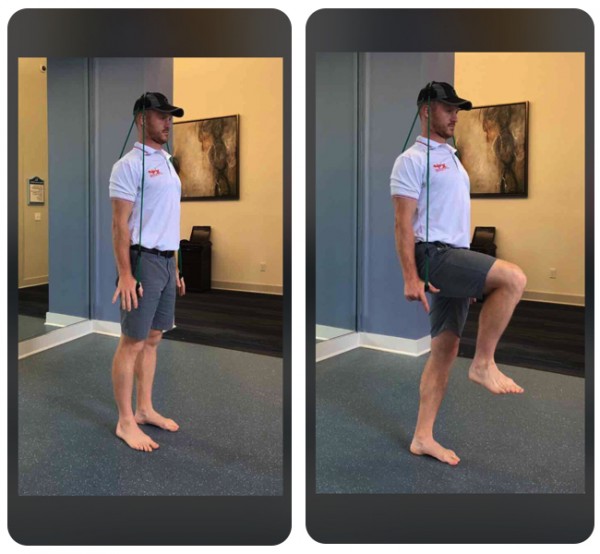
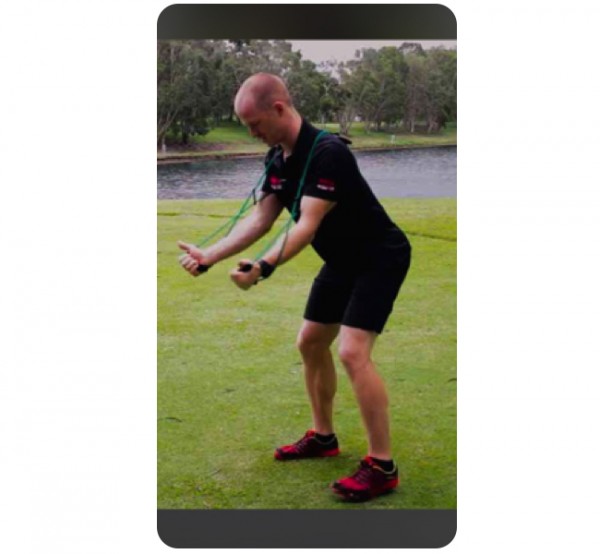
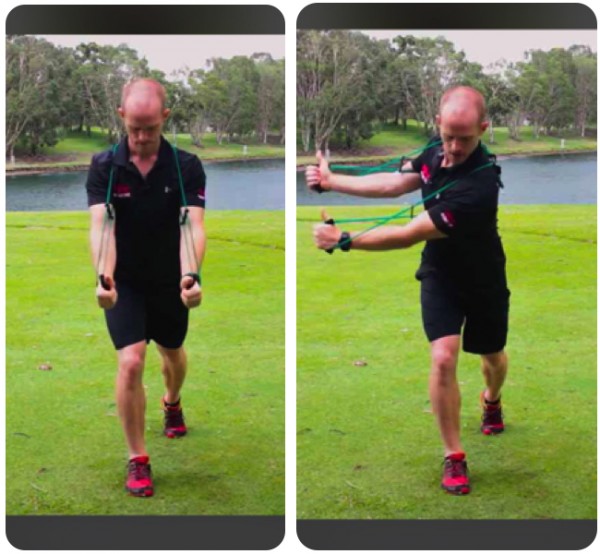
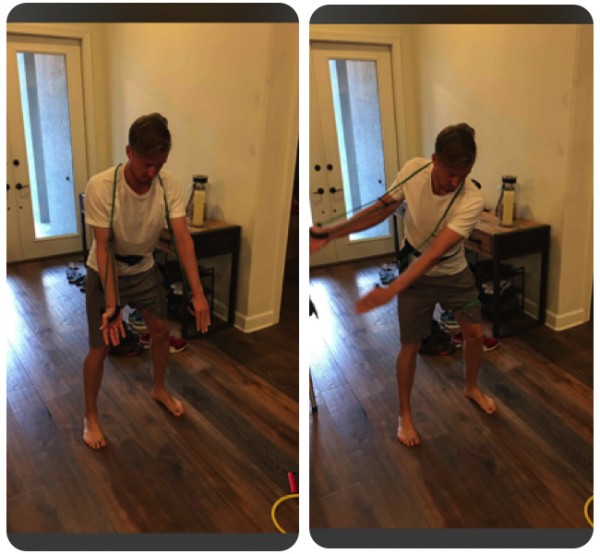
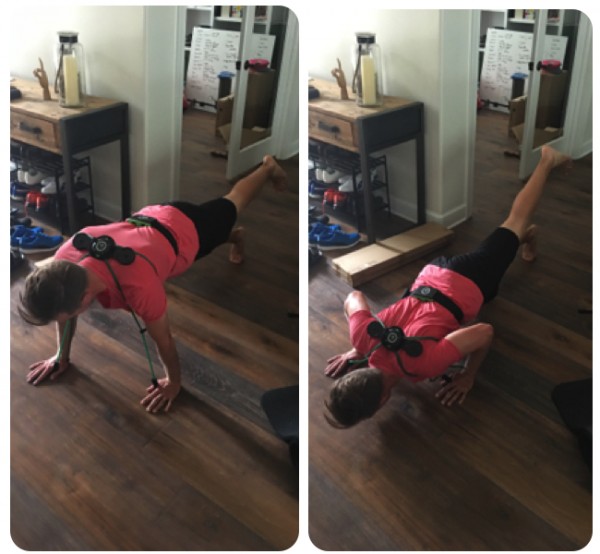

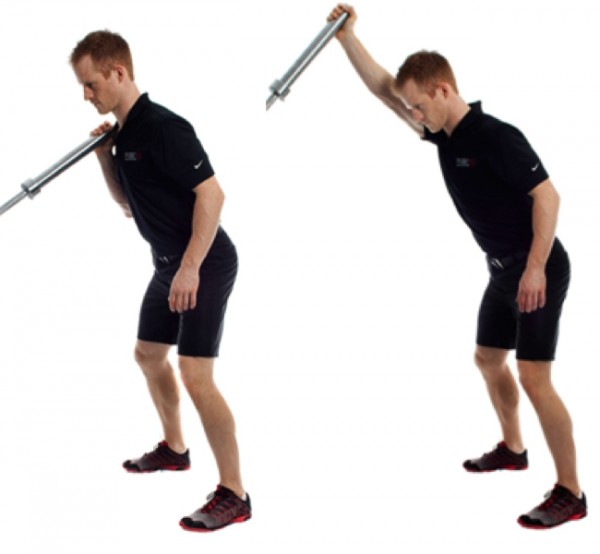
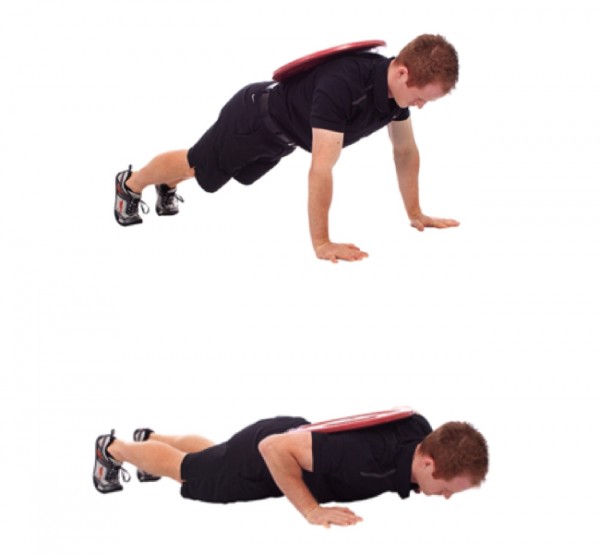









rosey
Aug 30, 2017 at 7:25 pm
great article!
And in case anyone cares, I’d definitely buy the “swing kit” off gravityfit if were half price. But $111 is crazy expensive!
Gnam
Aug 30, 2017 at 12:22 pm
Was Tiger right about his glutes not activating? 🙂
EngineerBob
Aug 30, 2017 at 3:40 pm
Vertically or horizontally? Now that he’s on all those prescription and recreational drugs he must be totally limpid …. if you know what I mean.
BH
Aug 30, 2017 at 8:54 am
Overall, this is an informative article. I appreciate this because I am someone who has back pain and is constantly working to make sure I keep it in control.
What I don’t appreciate is that the article implies that using GravityFit is THE way to do all of this. I incorporate most of these exercises into my workouts even without your product. So it’s frustrating for me to read this and get the impression that he had to use this product to get back to game shape. Any good fitness instructor could have worked with him and got him back all without that product.
Scott
Aug 30, 2017 at 8:26 am
Yes, proper rest after hitting a thousand balls is overlooked, especially by the young. There are always exceptions to the rule, but most will not escape the inevitable physical breakdown
Oppai
Aug 30, 2017 at 1:55 am
Geez, with all these exercises he had to do get fit and pain free, you would have thought he was a lazy fat slob of a weekend warrior trying to cut it on tour. Unbelievable that a player has to do all this just to stay with it on tour now.
Chris
Aug 30, 2017 at 7:46 am
It’s only in this particular case. Not every tour player need to go through all this.
SH
Aug 29, 2017 at 3:04 pm
Great article.. we hear that these guys train, but rarely get a glimpse into their regiment. Very cool!
Brad
Aug 29, 2017 at 3:36 pm
Visualize the training regimen and you too will be great in your mind.
SH
Aug 29, 2017 at 4:07 pm
I don’t think being great in our mind is an issue for any of us
Brad M.
Aug 29, 2017 at 1:57 pm
I’ve been a fan of bodyweight work for a long time. Adding resistance bands and the occasional extra load of weight (like in the standard pushup) is great after strength/stamina and fixing general fitness deficiencies have been accomplished. For the non-pro who may play/practice 2-10 times a month, are free weights and intensive weight training advised? Especially if we can’t afford (or simply won’t use) an expert for ongoing technical assistance?
Brad
Aug 29, 2017 at 3:34 pm
The average recreational play will never make a commitment to conditioning and training because they ‘don’t have the time’. They simply play for fun with their equally decrepit buddies and yukking their way painfully slowly down the course.
Of course a new set of SGI clubs ($1395), latest driver and fairways ($795) and a studio putter ($395) should make a significant improvement in their game. Oh, and ProV1s($50) for total tour quality WITB weapons. It’s a shame the clubs will get scratched up.
Instructors. trainers? Forget it, better to buy a rangefinder and great shoes and nifty clothes.
Boss
Aug 29, 2017 at 10:56 am
So, what you’re saying is, he wasn’t very fit before. LOL
Now he’s a bit more fitter, stronger.
But why not also change his swing and have him lift his left heel and swing with a more classic swing and let go of the finish and not strike a pose with feet down and torque twist that caused his problem like all modern swingers with the same problem?
Brad
Aug 29, 2017 at 10:53 am
Pro golfers injure their spine because they practice in an insane obsessive-compulsive manner. It’s all due to overuse, overstress and breakdown injury which is not given enough time to heal. IOW, they are oblivious to their injurious mental state and just continue on a downward spiral. These guys just fail and fade away. Blixt is an exception, but his chronic injury will haunt him forever.